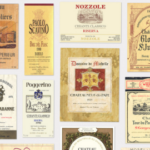Even if you don’t have a favorite wine that you consider your “go-to”, you likely prefer either dry wine or sweet wine. While there is a wine (or several) to fit just about every taste and preference out there, what gives the wines you love their signature dry and sweet qualities? Let’s talk about the difference between dry wines and sweet wines, and what makes wine taste the way it does.
What Makes a Wine Dry or Sweet?
How sweet or dry a wine is depends on the amount of residual sugar and the length of the fermentation process. Residual sugar comes from the natural sugars found in grapes and is left over after fermentation is complete. This natural grape sugar consists of both glucose and fructose. During the fermentation process, yeast “eats” these sugars, using them to form alcohol.
Winemakers stop the fermentation process to control both the flavor of the wine and the alcohol content it contains. If a winemaker stops fermentation before the majority of the sugar is consumed by the yeast, the result is a sweeter wine. Allowing the fermentation process to go on for a longer period consumes more sugar and results in a less sweet, or “dry” wine. In dry wines, alcohols and compounds called polyphenols interact with compounds in the mouth, causing an acidic or astringent sensation that covers most of the wine’s remaining sweet taste.
How Do You Know if a Wine Is Dry or Sweet?
Residual sugar is measured in grams/liter. Commercially sold wine is organized in 5 categories of sweetness based on the amount of residual sugar it contains:
- Bone dry – 0-1g/liter
- Dry – 0-17g/liter
- Off Dry – 17-35 g/liter
- Medium Sweet – 35-120g/liter
- Sweet – 120+g/liter
Take a glance at the bottle to find any indication of sweetness listed above, or a numeric value for residual sugar.
Popular Wines in the Middle
Wines with more tannon pair well with fresh seafood, naturally sweet foods, or anything citrusy. Popular dry varieties sold at Payless Liquors include:
- Chardonnay
- Sauvignon Blanc
- Pinot Grigio
- Chablis
- Riesling
- Moselle
- Pinot Noir
- Zinfandel
By contrast, sweet wines pair particularly well with sweet foods (hence, dessert wines), but also with salty, savory, and spicy foods. Popular sweet wines sold at Payless Liquors include:
- Riesling
- Moscato
- Port
- Tokaji
- Sauternes
- Dolce
- Madeira
- Dessert wines
- Sec
- Late harvest wines
You’ll notice Riesling is on both the dry and the sweet list. In fact, any wine can have either taste depending on the individual choices of the winemaker. Riesling is a varietal that is quite often made using both sweet and dry production methods.
Whether you prefer a glass of dry wine or you’d rather sip something a little sweeter, there is truly a wine for everyone, whether you love the extremes or those in between. We suggest a wine tasting to try out several different dry whites and dry reds, then some sweeter wines of all colors. Wine tastings are a fun way to experiment with a variety of wines until you land on your favorite. Stop by and check out the extensive selection of dry and sweet wines at Payless Liquors. Or, take advantage of our pre-order and curbside pick-up options for a convenient and safe way to shop













